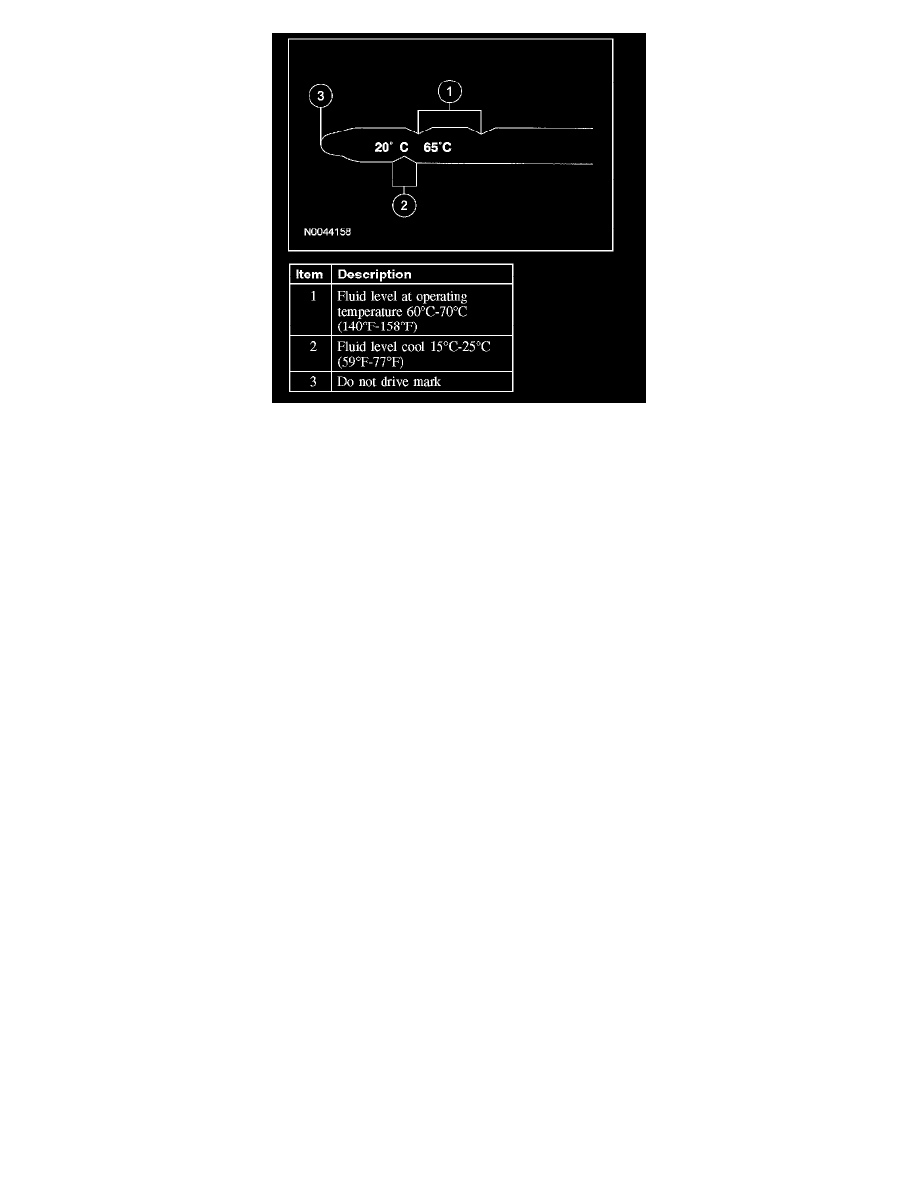Milan FWD L4-2.3L VIN Z (2007)

High Fluid Level
A fluid level that is too high may cause the fluid to become aerated due to the churning action of the rotating internal parts. This will cause erratic
control pressure, foaming, loss of fluid from the vent tube and possible transaxle malfunction and/or damage. If an overfill reading is indicated.
Low Fluid Level
A low fluid level could result in poor transaxle engagement, slipping, malfunction and/or damage. This could also indicate a leak in one of the
transaxle seals or gaskets.
Adding Fluid
CAUTION: MERCON "(R)", MERCON "(R)" V, MERCON "(R)" SP, Motorcraft Premium Automatic Transmission Fluid, Motorcraft
Continuously Variable Chain Type Transmission Fluid and FNR5 automatic transmission fluid are not interchangeable transmission fluids.
The use of any fluid other than what is recommended for this transmission will cause transmission damage.
If fluid needs to be added, add fluid in 0.25L (1/2 pint) increments through the indicator tube. Do not overfill the fluid. For fluid type, refer to the
specification chart.
Fluid Condition Check
1. Check the fluid level.
2. Observe the color and the odor. The color under normal circumstances should be a dark red color, not brown or black or have a burnt odor.
3. Hold the fluid level indicator over a white facial tissue and allow the fluid to drip onto the facial tissue and examine the stain.
4. If evidence of solid material is found, the transmission fluid pan should be removed for further inspection.
5. If the stain is a foamy pink color this may indicate coolant in the transaxle. The engine cooling system should also be inspected at this time.
6. If fluid contamination or transaxle failure is confirmed by the sediment in the bottom of the fluid pan, install a new transaxle. If installing a new
transaxle, the cooler tubes should be cleaned.
7. If the transaxle is to be overhauled or if installing a new transaxle, the fluid cooler must be backflushed.
Transaxle Cooling - FNR5
Check Fluid Level and Condition
CAUTION: The vehicle should not be driven if the fluid level indicator shows the fluid below the minimum fluid level mark or internal
failure could result.
If the vehicle has been operated for an extended period of time at highway speeds, in city traffic, in hot weather or while pulling a trailer, the fluid
needs to cool down to obtain an accurate reading.
The fluid level reading on the fluid level indicator will differ depending on operating and ambient temperatures. The correct reading should be within
the normal operating temperature range.
Fluid Level Check
NOTE: The transmission fluid should be checked at normal operating temperature 60°C-70°C (140°F-158°F) on a level surface. Normal operating
temperature can be reached after approximately 32 km (20 miles) of driving and can be checked using the scan tool.
